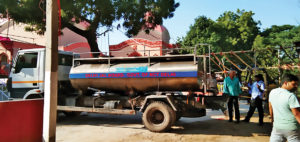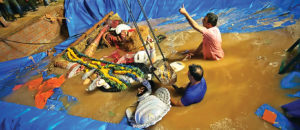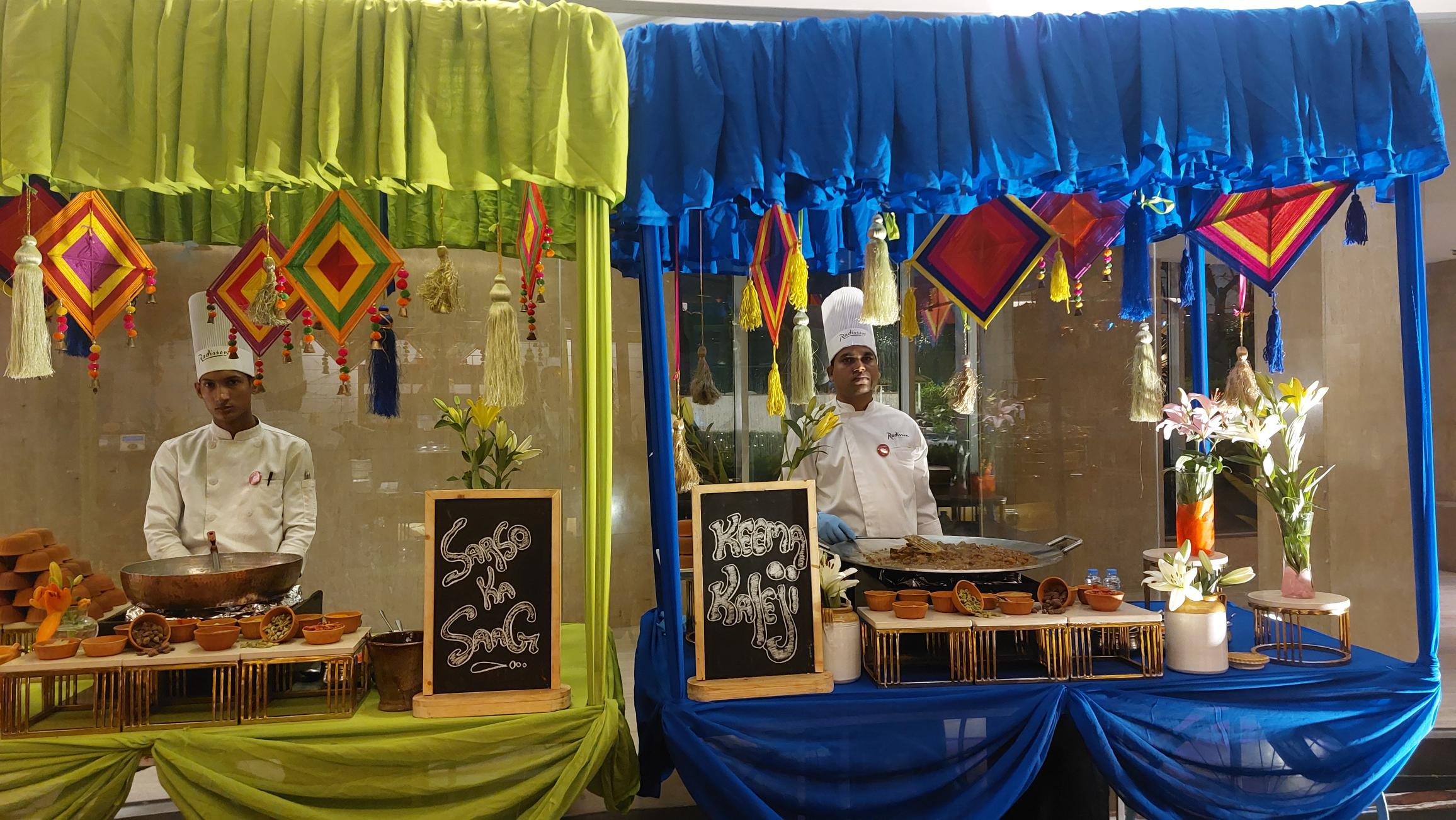Artificial ponds were built near pandals in Chittaranjan Park to immerse the idols. The Yamuna was spared this year but was the festival really eco-friendly?
Tuesday was the 10th and last day of the Durga Puja. Chittaranjan Park was festooned with colourful lights, and there was the usual line-up of food and cultural programmes. Residents call this “hotch potch”, meaning chaos. It has always been like this, save for a significant change this year: Durga idols were immersed in artificial ponds near the pandals rather than in the Yamuna river.
It was the first Durga Puja after the introduction of a complete ban on the immersion of idols in the Yamuna. Last month, the National Green Tribunal ordered immersions should be “scientifically regulated and non-compliance strictly dealt with”. The ban applied to the immersion of idols during Ganesh Chaturthi as well.
The immersion and the procession to the immersion spot form an integral part of the Durga Puja celebration. So, organising committees dealt with the ban by constructing artificial ponds near the pandals. The ponds were made “sacred” too, as one resident explained, through pujas and the sprinkling of Ganga water.

Chittaranjan Park has about 10 major pandals. Every year, the K Block pandal spends Rs 40-50 lakh on organising the festival. This year, the artificial pond was an additional expense of over Rs 1 lakh. Rahul Chakravarthy, exe-cutive committee member of the K Block pandal, explained that they chose to build a permanent structure.
“We took permission from the Municipal Corporation of Delhi as this ground is MCD property,” Chakravarthy said. “We constructed a permanent structure that can be used every year. The overall cost of the artificial pond is Rs 2.5 lakh. We raised the money through donations and sponsors.”
K Block’s artificial pond is right next to its pandal so they did not have a procession, explained Utpal Dey, an advisory committee member of the K Block pandal. Before the ban was enforced, their immersion — like all others — took place in the Yamuna. “We would use the Outer Ring Road and walk till Kalindi Kunj, dancing all the way to immerse the idol in the Yamuna,” he said. This year, the idol was perfunctorily taken around Chittaranjan Park.
But despite these minor adjustment issues, most people Newslaundry spoke to were happy with the ban on immersions in the Yamuna. “We stopped immersing idols in the Yamuna about six years ago because it’s become really dirty,” said Prabir Das, a member of the B Block pandal. “We felt bad about immersing Ma Durga there. The whole river smells so much; we never entered it.”
B Block’s pandal was the first to build an artificial pond, years before the NGT ban. Das said the pond has other benefits apart from cleanliness. “Earlier, only the young crowd could participate in the immersion,” he said. “But now, senior citizens and residents can also watch it, as it’s happening nearby in an organised manner.”
There was one issue with the eco-friendly drive, though: the volume of freshwater used to fill the ponds. On average, each pandal received six or seven tankers of water to fill the ponds. Each tanker has an average capacity of 8,000 litres. That’s thousands of litres of freshwater that could have been used for other purposes.
In Astha Kunj Park in East of Kailash, a long queue had formed around one of the common artificial ponds there. According to the residents, the Delhi government charges Rs 8,000 for immersion in these “common area” ponds. Bhishan Singh, an employee of the Delhi Jal Board, said about 20 tankers, each with a capacity of 10,000 litres, were used to fill the pond. “We don’t know how much more water will be required,” he told Newslaundry. “Water about six-foot deep has been pumped into this pond.”

However, the Kali Mandir committee pointed out that the water would be used for groundwater replenishment. Anjan Mukherjee, a member of the committee, said, “We had a structure in place for rainwater harvesting. We utilise it to immerse the idol. After the immersion, we will use the water for other purposes.”
Most pandals also claimed their idols were “eco-friendly”, made from soluble materials and natural dyes instead of plaster of paris and toxic chemicals.
Chittaranjan Park’s residents agreed that the arrangements for idol immersion this year were “very nice” and credited Greater Kailash MLA Saurabh Bharadwaj for making the process smooth. Newslaundry contacted Bhar-adwaj to ask about the arrangements made to provide water to the artificial ponds. The story will be updated if a response is received.
Amidst the festivities, one thing was clear: The Yamuna is as good as dead for many residents of Delhi. “It’s not a river,” Mukherjee said. “It’s just drainage.”
www.newslaundry.com





